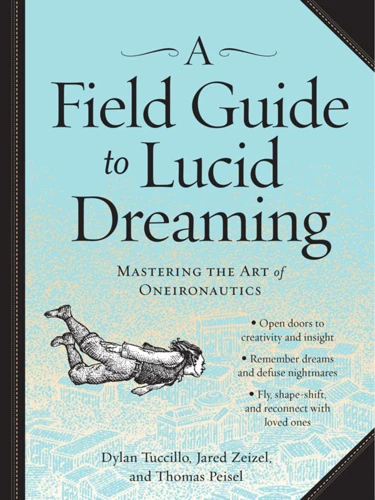Have you ever found yourself in a dream, feeling trapped and helpless as if you have no control over what is happening around you? It is a common experience that can leave you feeling unsettled and frustrated. However, what if there was a way to take control of your dreams and make them a playground for endless possibilities? This is where the concept of lucid dreaming comes in. Mastering lucid dreaming takes time and practice, but a fundamental step towards achieving it is through the use of reality checks. In this article, we will explore the importance of reality checks in lucid dreaming, how to do them, choosing the best technique for you, common mistakes to avoid, and tips for success. So, let’s dive in and take the first step towards mastering reality checks for lucid dreaming.
What are Reality Checks?

Have you ever felt convinced that you were awake, only to later realize you were actually in a dream? This experience, known as a false awakening, can be confusing and disorienting. Reality checks are a fundamental tool used to prevent false awakenings, achieve lucid dreaming, and gain control over your dream state. In this section, we will explore the definition of reality checks and their importance in the world of lucid dreaming.
Definition
Reality checks are a technique used in lucid dreaming to help distinguish between the dream world and reality. Simply speaking, a reality check is a test that you perform to confirm whether or not you are dreaming.
What are reality checks?
Reality checks are a vital step to achieving lucid dreaming. A reality check is a technique that helps you distinguish the dream world from reality. It is a test that you perform during your waking hours to determine whether or not you are dreaming. While you are sleeping, your brain often accepts the strangeness of a dream as reality. Reality checks help you to realize when you are in a dream, allowing you to take control of the dream and become lucid.
Why are reality checks important for lucid dreaming?
When you are dreaming, it can be challenging to realize that you are in fact dreaming. The dream world can feel so real that your brain may mistake it for reality. This is where reality checks come in. By performing reality checks regularly throughout the day, you are programming your mind to perform this same test during your dreams. This increases the likelihood of realizing that you are in a dream and becoming lucid, allowing you to control the dream and do whatever you want.
Here is an HTML table to summarize the information:
| Definition | Importance in Lucid Dreaming |
|---|---|
| A technique used to distinguish between the dream world and reality | Increases the likelihood of realizing that you are in a dream, allowing you to become lucid and control the dream |
Importance in Lucid Dreaming
Reality checks are an essential part of lucid dreaming, and their importance cannot be overstated. Lucid dreaming is the ability to become aware that you are dreaming while you are asleep. This can lead to a variety of benefits, such as improved creativity, problem-solving, and the ability to confront fears and anxieties in a safe, controlled environment.
However, without reality checks, it can be difficult to achieve lucid dreaming. When you are dreaming, your brain accepts the events in the dream as real, and you may not even question the strange occurrences that happen. In order to become aware that you are dreaming, you need to be able to recognize when you are in a dream. This is where reality checks come in.
Reality checks allow you to determine whether you are in a dream or not. By performing reality checks regularly throughout the day, you can train your brain to recognize the differences between reality and the dream world. This increased awareness can lead to lucid dreaming, as you become more likely to notice when you are in a dream and take control of it.
Reality checks can help you stay in a lucid dream for longer periods of time. Sometimes, even when you become aware that you are dreaming, the dream can quickly fade away and you wake up. By regularly performing reality checks and focusing on the sensations in the dream, you can maintain your awareness and stay in the dream longer.
Reality checks are a crucial tool for anyone who wants to explore the world of lucid dreaming. By practicing these checks regularly, you can improve your chances of achieving lucid dreaming and experiencing all of its incredible benefits.
How to Do Reality Checks

The concept of reality checks for the purpose of lucid dreaming may sound perplexing at first. However, mastering these checks is a fundamental step towards achieving lucidity in your dreams. It’s not just about performing the checks, but also understanding how and when to do them. In this section, we will delve into the techniques of performing reality checks and explore the various methods that you can adopt for maximum effectiveness. By the end of this article, you’ll have a step-by-step guide to help you make reality checks a part of your dream habit.
Techniques
There are numerous reality check techniques that you can use to confirm whether you are dreaming or not. All of them are equally effective, but not all of them may work best for you. In this section, we will be discussing some of the most popular reality check techniques and how to perform them.
| Reality Check Technique | Description |
|---|---|
| Finger Counting | Count your fingers regularly throughout the day so that you can easily do this in your dreams. If you notice that your fingers are multiplied, disappeared or any other abnormalities, you are dreaming. |
| Nose Pinching | Pinch your nose and try to breathe through it. If you can still breathe, you are dreaming because this is impossible in real life. |
| Text Reading | Read something, then look away and read it again. If the text changes or becomes illegible, you are likely dreaming. |
| Hand Check | Check your hands for abnormalities or distortions, such as extra or missing fingers. This is a good technique for those who don’t want to draw attention to themselves in public. |
| Light Switch | Try turning a light switch on or off. In dreams, light switches may not work as they should, or the light may not change. |
| Time Check | Look at a clock, then look away and look back again. In dreams, the time may not make sense or the clock may have unusual features. |
It’s important to remember that you should perform reality checks frequently throughout the day, not just when you suspect you may be dreaming. This will help you build the habit and increase your chances of becoming lucid in a dream.
When to Do Them
Performing reality checks at appropriate times is crucial for inducing lucid dreams. Here are some strategic moments to incorporate them into your daily routine:
- Throughout the day: It is important to regularly perform reality checks throughout the day. Every time you complete a routine activity like checking the time, passing through a doorway or drinking from a glass, perform a reality check simultaneously. This repetition will help you make a habit out of it and will prompt you to perform a reality check during your sleep or when you encounter the same situation in your dream.
- During unusual occurrences: Strange occurrences or events often happen in dreams. That’s why if something unusual happens in your waking life, use that as an opportunity to perform a reality check. If you experience something bizarre such as seeing someone walking through walls, seeing objects that shouldn’t exist, or experiencing a sudden change in environment, it may indicate that you are dreaming.
- After waking up: Directly after waking up from a dream, perform a reality check to determine whether you are in a dream or reality. This will be helpful in cases of false awakenings where you believe you are awake, although you are still within a dream.
By frequently and consistently going through the reality check process, you are more likely to notice when you are in a dream and thus more likely to have a lucid dream.
Choosing the Best Reality Check Technique for You

When it comes to reality checks, there is no one-size-fits-all technique. To choose the best technique for you, start by considering your personal preferences and lifestyle.
Hand-based Reality Checks: Many people prefer to use hand-based reality checks because they are discreet, can be done in public without drawing attention to oneself, and can be done as frequently or infrequently as desired. The most common hand-based reality check involves checking the number of fingers on one’s hand.
Nose-plug Reality Checks: Other individuals find that nose-plug reality checks work well for them. This technique involves pinching one’s nose closed and attempting to breathe through it. If you can breathe through your nose while it’s pinched, you must be dreaming because it is impossible to do so in real life.
Text-based Reality Checks: For individuals who enjoy reading or working with written materials, text-based reality checks may be the best option. This involves looking at a piece of text or digital clock, look away, then look back. If the text or numbers have changed or become inconsistent, it indicates a dream.
Other Techniques: Additionally, there are other less common reality checks to consider – such as using a mirror, performing a light switch flip or looking at one’s reflection in a reflective surface.
Keep in mind, reality checks should not be overly complicated or require too much effort on your part. The goal is to make the reality check a habit and part of your daily routine. Chose a technique(s) that fits naturally within your routine and one that you can realistically perform frequently throughout the day or before bed.
How Reality Checks Help with Lucid Dreaming

Reality checks are essential for achieving lucid dreaming. Lucid dreaming is a state of consciousness where the dreamer is aware that they are in a dream and can control the dream’s events. Reality checks help the dreamer become aware of their dream state and increase their chances of having a lucid dream.
Increased Self-Awareness: Reality checks can help people become more self-aware, both during their waking life and their dreams. By constantly checking their surroundings and testing whether or not they are in a dream, individuals train themselves to notice discrepancies between reality and their dreams. This heightened awareness improves an individual’s ability to recognize when they are dreaming, allowing them to take control.
Improved Dream Recall: Reality checks also improve an individual’s dream recall, making it easier to remember their dreams. Because the dreamer is constantly checking their surroundings and testing if they are dreaming, they are more likely to remember their dreams when they wake up. This increased dream recall makes it easier to analyze and interpret dreams, which can help individuals identify recurring dream patterns, symbols, and themes.
Increased Control: By performing reality checks, individuals can increase their chances of having a lucid dream, and once they are in a lucid dream, it becomes easier to control the events happening within the dream. Reality checks can help individuals stay grounded within their dream world and remind them that they have the power to manipulate their dreams.
Reduced Nightmares: Reality checks can help alleviate the frequency of nightmares. Nightmares can be incredibly distressing, but with the ability to recognize when one is in a dream, individuals can calm themselves and take control of the dream. In some cases, reality checks can even help individuals turn their nightmares into positive, lucid dreams.
Reality checks are a fundamental aspect of lucid dreaming. By increasing self-awareness, improving dream recall, increasing control, and reducing nightmares, reality checks guide individuals towards having a more fulfilling dream life.
Common Mistakes to Avoid

When it comes to mastering reality checks for lucid dreaming, there are some common mistakes that many beginners make. These mistakes can hinder your progress towards lucidity, so it’s important to be aware of them and avoid them as much as possible.
Skipping Reality Checks – One of the biggest mistakes that people make is skipping reality checks altogether. It can be easy to get caught up in the excitement of trying out different lucid dreaming techniques and forget about the importance of reality checks. However, reality checks are a crucial step in becoming lucid and should not be overlooked.
Inconsistent Practice – Another mistake that many beginners make is being inconsistent with their reality check practice. To truly master reality checks, you need to make them a consistent part of your daily routine. Try to do them at the same time every day and make sure to do them several times throughout the day.
Not Paying Attention to Details – When you’re doing a reality check, it’s important to pay attention to the details of your surroundings. Many people make the mistake of simply going through the motions of a reality check without really taking the time to fully examine their environment. Take a few moments to observe your surroundings and ask yourself if anything seems out of the ordinary.
Not Being Mindful – Mindfulness is an essential component of lucid dreaming, and it’s especially important when doing reality checks. When you’re performing a reality check, you should be fully present in the moment and focused on the task at hand. Many beginners make the mistake of not being mindful and simply going through the motions without really engaging in the process.
Expecting Immediate Results – Finally, it’s important to remember that mastering reality checks for lucid dreaming is a process that takes time and patience. Many beginners make the mistake of expecting immediate results and becoming frustrated when they don’t see immediate progress. Remember that everyone learns at their own pace, and if you stick with it, you’ll eventually see results.
By being aware of these common mistakes and actively working to avoid them, you’ll be well on your way to mastering reality checks and achieving lucid dreams on a regular basis.
Tips for Success

As you work towards mastering reality checks and achieving lucid dreaming, there are a few tips that can help increase your chances of success. These strategies are designed to help you stay focused, motivated, and on track with your practice. By incorporating these tips into your routine, you may find that you are able to experience more frequent and vivid lucid dreams. Here are some useful suggestions to keep in mind:
Using Reality Checks with Other Techniques
When it comes to using reality checks with other techniques, there are several combinations that can be effective for lucid dreaming. Here are some examples:
| Technique Combination | Description |
|---|---|
| MILD + Reality Checks | This combination involves regularly doing reality checks throughout the day while also performing Mnemonic Induction of Lucid Dreams (MILD) at bedtime. MILD involves setting an intention to remember to recognize when you are dreaming and become lucid. |
| WBTB + Reality Checks | Wake Back To Bed (WBTB) involves waking up in the middle of the night and then going back to sleep with the intention of becoming lucid. Combine this technique with reality checks during the day for increased chances of having a lucid dream. |
| FILD + Reality Checks | The Finger Induced Lucid Dream (FILD) technique involves lightly moving your fingers in a specific pattern while falling asleep with the intention of entering a lucid dream. Doing reality checks during the day can help increase your chances of becoming lucid with this technique. |
| WILD + Reality Checks | The Wake Induced Lucid Dream (WILD) technique involves staying aware while your body falls asleep, essentially transitioning directly from being awake to being in a dream. Practicing reality checks during the day can help train your mind to recognize the transition from waking to dreaming. |
It’s important to note that while combining reality checks with other lucid dream-inducing techniques can be effective, it’s also important to maintain consistency with reality checks throughout the day. Over-relying on techniques such as WBTB or MILD without consistently practicing reality checks can decrease the likelihood of having a lucid dream. It’s important to find a balance between utilizing multiple techniques and maintaining a strong reality check habit.
Maintaining Consistency
Maintaining consistency is key to making reality checks an effective tool for achieving lucid dreaming. This means consistently performing reality checks throughout the day, even when you are not actively trying to have a lucid dream. The more consistent you are with your reality checks, the more likely they are to become habitual and the more effective they will be in helping you achieve lucid dreaming.
One way to maintain consistency is to set reminders on your phone or computer to prompt you to do reality checks at regular intervals throughout the day. Another method is to associate reality checks with certain activities, for example, every time you pass through a doorway, pick up your phone or see a particular object, you perform a reality check.
To help you maintain consistency, here is a table with some examples of activities you can associate with reality checks:
| Activity | Reality Check |
|---|---|
| Passing through a doorway | Ask yourself: Am I dreaming? |
| Checking your phone | Count your fingers: Do you have the correct number of fingers? |
| Seeing a red car | Pinch your nose: Can you still breathe through your nose? |
| Feeling anxious | Ask yourself: Am I dreaming? |
| Seeing a person wearing a hat | Try to push your finger through your hand: Does it go through? |
By consistently performing reality checks throughout the day, regardless of whether or not you think you are dreaming, you will train your mind to engage in the habit during a dream as well. This can increase the likelihood of becoming lucid and having more control over your dreams.
Overcoming Challenges

As we deepen our practice of reality checks, we may encounter certain challenges that can prevent us from achieving our lucid dreaming goals. These challenges may include false awakenings and difficulty with dream recall. While these obstacles may seem discouraging, they can be overcome with the right strategies and mindset. In this section, we will explore some common challenges that lucid dreamers face and discuss ways to overcome them so that we can continue our journey towards masterful reality checking and ultimately, lucid dreaming success.
Dealing with False Awakenings
One common challenge that lucid dreamers face is dealing with false awakenings. These occurrences happen when you dream that you have woken up, only to realize later that you are still in a dream. This can be frustrating, especially if you have used reality checks to determine whether you are truly awake or not.
To avoid being fooled by false awakenings, it is essential to have a plan for dealing with them. Here are some strategies to consider:
| Strategy | Description |
|---|---|
| Perform Reality Checks | Even when you think you have woken up, continue to perform reality checks. This can help you determine whether you are actually awake or experiencing a false awakening. |
| Maintain a Dream Journal | Record the details of any false awakenings in your dream journal. This can help you recognize patterns and triggers that may be contributing to these experiences. |
| Use Affirmations | When you go to bed at night, use affirmations to program your subconscious mind to recognize and alert you to false awakenings. You might say something like, “I will easily recognize when I am dreaming, even during false awakenings.” |
| Perform Reality Checks Throughout the Day | The more often you perform reality checks, the more likely you are to catch false awakenings as they happen. Incorporate reality checks into your daily routine, such as checking the time, looking at your reflection, or counting your fingers. |
| Stay Calm and Don’t Panic | Although false awakenings can be unsettling, it’s important not to panic. Staying calm can help you maintain your lucidity and control over your dream environment. |
Remember, dealing with false awakenings is a normal part of the lucid dreaming experience. By using reality checks and other strategies, you can increase your chances of recognizing when you are dreaming and staying in control of your dreams.
Increasing Dream Recall
One of the key steps towards mastering reality checks is increasing your dream recall. This means improving your ability to remember your dreams in detail, which will in turn make it easier to analyze and recognize dream-like scenarios in waking life.
Here are some strategies you can try to increase your dream recall:
| Strategy | Description |
|---|---|
| Keep a dream journal | Record your dreams as soon as you wake up. Write down as much detail as possible, including emotions, colors, and sensations. Look for patterns or recurring themes in your dreams. |
| Visualize your dreams | Before going to sleep, take a few minutes to visualize yourself remembering your dreams in the morning. Imagine yourself writing down the details and reliving the experience. |
| Use memory aids | Place objects or images in your bedroom that remind you of your dream goals or key dream symbols. This can help trigger dream memories when you wake up. |
| Avoid alcohol and drugs | Alcohol and drugs can disrupt sleep patterns and decrease dream recall. Try to limit or avoid these substances if you want to improve your dream recall. |
| Get enough sleep | A lack of sleep can make it more difficult to remember your dreams. Try to get at least 7-8 hours of restful sleep each night. |
By incorporating these strategies into your routine, you can increase your dream recall and enhance your overall lucid dreaming practice. Remember, it takes time and consistency to develop good dream recall habits, so be patient and keep practicing.
Creating a Reality Check Habit

In order to successfully master reality checks as a fundamental step towards lucid dreaming, it is important to create a habit of performing them regularly. This requires a conscious effort to ingrain the habit into your daily routine, so that over time it becomes second nature.
Setting a Reminder
One effective way to create this habit is by setting reminders at regular intervals throughout the day. This can be achieved through the use of a simple alarm on your phone or watch, or by writing notes to yourself and placing them in strategic locations such as on your computer screen or bathroom mirror.
Pairing with Other Habits
Another strategy is to pair reality checks with existing habits that you already perform throughout the day. For example, you could perform a reality check every time you wash your hands or every time you walk through a doorway. This helps to integrate the habit more seamlessly into your routine and makes it more likely that you will continue to perform reality checks regularly.
Tracking Progress
Tracking your progress can also be helpful in creating a reality check habit. This can be done using a simple journal where you record each time you perform a reality check, as well as any dreams or other observations you may have had that day. By reviewing your progress over time, you can celebrate your successes and identify areas where you may need to improve.
Staying Motivated
Staying motivated is key when trying to create any new habit. One way to stay motivated is to remind yourself why you are doing reality checks in the first place. Keep in mind the benefits that come with mastering this technique, such as increased lucid dreaming frequency, greater dream control, and improved overall sleep quality.
By consistently performing reality checks and making them an integral part of your daily routine, you can successfully create a habit that will support your lucid dreaming goals. Remember that creating a habit takes time and effort, so be patient with yourself and stay the course. Eventually, reality checks will become second nature and you will be well on your way to mastering the art of lucid dreaming.
Step-by-Step Guide to Reality Checks for Lucid Dreaming
To begin with the step-by-step guide to reality checks for lucid dreaming, you must first choose your reality check technique. As previously mentioned, there are several techniques to choose from, including the nose pinch method, hand-check method, digital watch method, and more.
Once you have chosen your technique, you should practice it consistently throughout the day. This can be done by setting reminders on your phone or computer, or by associating the reality check with a specific activity, such as every time you go through a doorway or every time you see your reflection.
When performing a reality check, it is important to not just perform the action, but to also question your reality and truly consider whether or not you are in a dream. This means truly focusing on the sensations and assessing whether they align with what you would expect in reality.
Another important step in the process is to maintain consistency with your reality checks. This means performing them at the same frequency and at the same level of thoughtfulness each time. This consistency helps to create a habit, reinforcing the habit and making it easier to perform automatically in the future.
In addition to performing reality checks throughout the day, it can also be helpful to incorporate them into your pre-sleep routine. This can involve performing several reality checks before going to bed, focusing on the idea of lucidity in your dreams, and setting an intention to become lucid in your dreams.
Overcoming challenges such as false awakenings and increasing dream recall can also be an important part of the process. By remaining persistent and practicing regularly, you can strengthen your ability to recognize when you are dreaming and increase your chances of having lucid dreams.
By following this step-by-step guide to reality checks for lucid dreaming, you can create a powerful tool for achieving greater awareness and control in your dreams. With patience, consistency, and a willingness to learn from your experiences, you can unlock the incredible potential of lucid dreaming and discover a whole new world of possibilities.
Conclusion
In conclusion, mastering reality checks is a fundamental step towards achieving lucid dreaming. By regularly and consistently performing reality checks, individuals can increase their awareness and recognition of the dream state. This awareness is crucial in distinguishing dreams from reality, enabling lucid dreamers to take control of their dreaming experiences.
It is important to remember that reality checks are not a standalone technique for lucid dreaming, but rather a complementary practice that should be used in conjunction with other techniques. Additionally, it is crucial to maintain consistency in performing reality checks, even when not actively seeking lucid dreams.
While reality checks can be challenging at first, with patience and perseverance, individuals can develop a habitual practice that ultimately leads to more frequent and vivid lucid dreams. By choosing a reality check technique that works best for them and overcoming common challenges such as false awakenings, lucid dreamers can enhance their dreaming experiences and potentially gain insights into their subconscious mind.
In summary, the journey towards achieving lucid dreaming is a personal and unique one. However, reality checks are a valuable tool that can greatly improve the chances of experiencing lucid dreams. By incorporating them into a daily routine and combining with other techniques, individuals can unlock new realms of self-exploration and creativity.
Frequently Asked Questions
What happens if I don’t do reality checks?
Without reality checks, it will be difficult to recognize whether you are dreaming or not, making it nearly impossible to achieve lucid dreaming.
How many reality checks should I do in a day?
It is recommended that you do at least 10-15 reality checks per day to establish the habit and improve your chances of lucid dreaming.
What is the most effective reality check technique?
There is no one “best” reality check technique as it varies from person to person. It is important to try different techniques and determine which one works best for you.
Can reality checks be done at night?
Yes, reality checks can be done at night before going to sleep or during the night if you wake up from a dream.
Can reality checks be done without lucid dreaming as the goal?
Yes, reality checks can be helpful for increasing mindfulness and self-awareness in daily life, even without the goal of lucid dreaming.
How long does it usually take to achieve lucid dreaming with reality checks?
It varies from person to person, but with consistent effort and practice, it is possible to achieve lucid dreaming within a few weeks to a few months.
Do reality checks have any negative effects?
No, reality checks are simply a technique for improving self-awareness and do not have any known negative effects.
Can reality checks be combined with other lucid dreaming techniques?
Yes, reality checks can be combined with other techniques such as dream journaling and relaxation techniques to increase the chances of achieving lucid dreaming.
Do reality checks require any special equipment?
No, reality checks do not require any special equipment and can be done at any time or place.
Is lucid dreaming safe?
Yes, lucid dreaming is generally considered safe and can be a fun and rewarding experience. However, it is important to practice good sleep hygiene and consult with a healthcare professional if you have any concerns.








